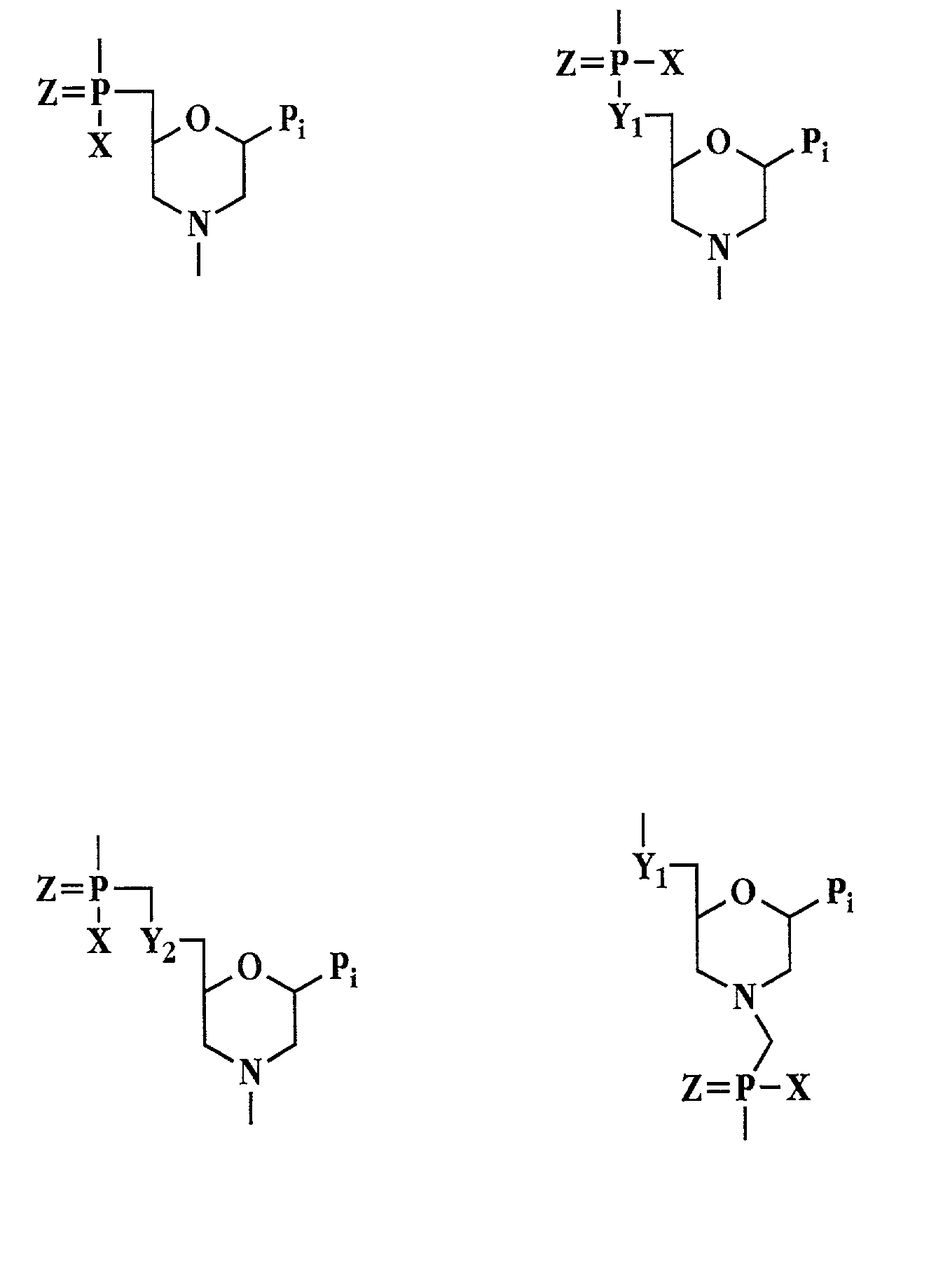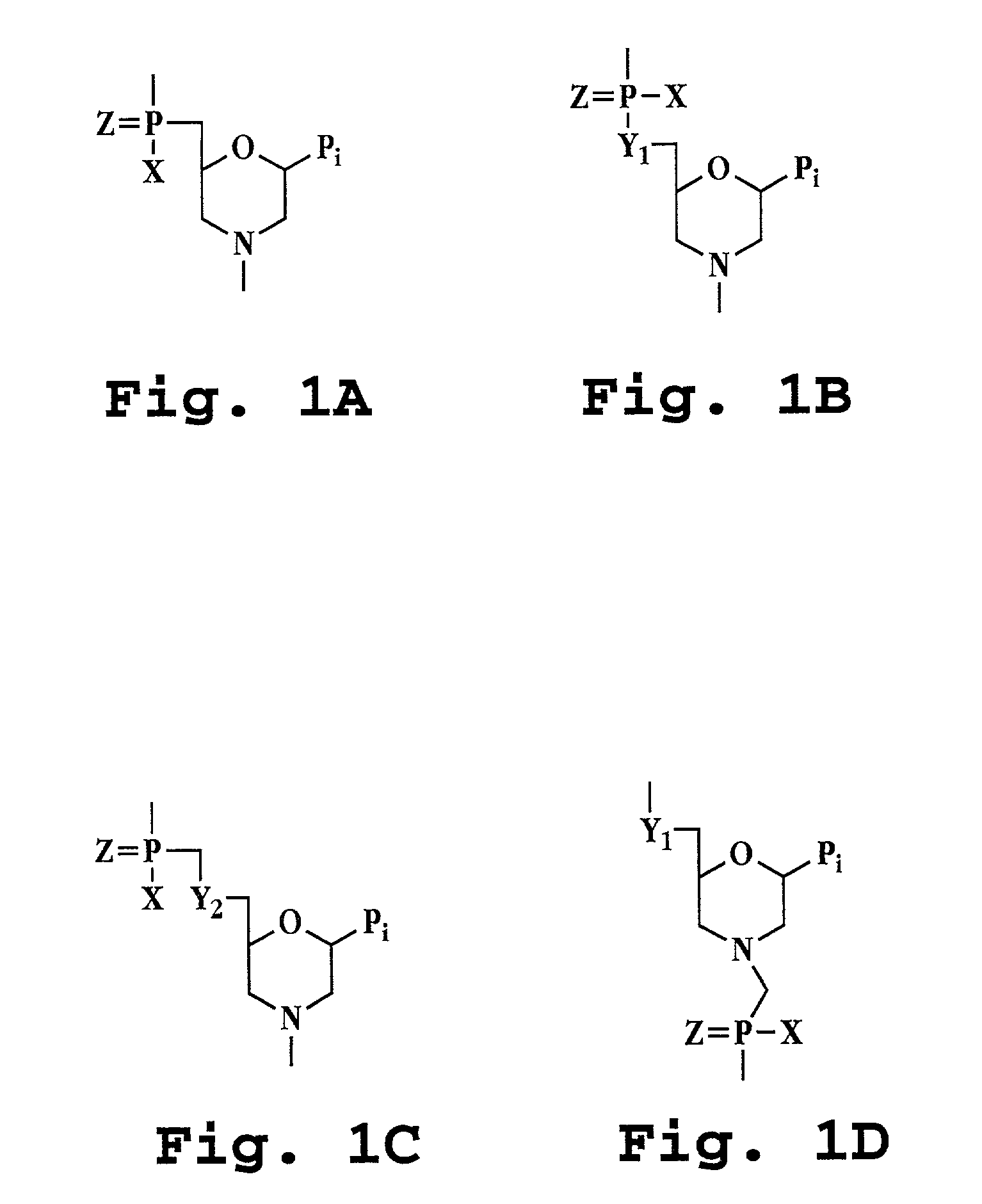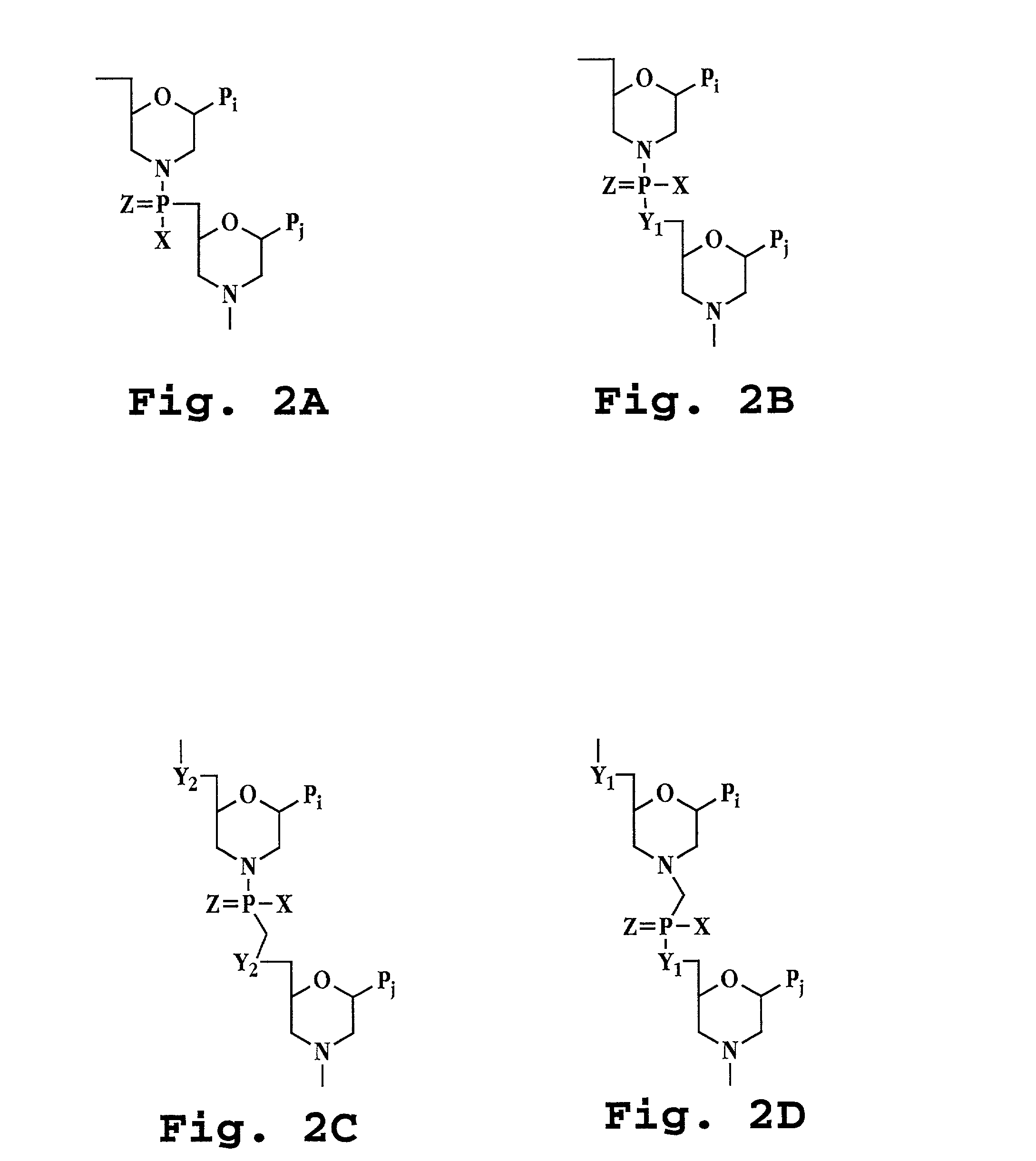Antisense antibacterial cell division composition and method
a technology composition, applied in the field of antibacterial cell division composition and composition, can solve the problems of poor uptake of antibacterial agents, lack of current research efforts to find new types of antibiotics, and marginal success of approaches
- Summary
- Abstract
- Description
- Claims
- Application Information
AI Technical Summary
Benefits of technology
Problems solved by technology
Method used
Image
Examples
Embodiment Construction
I. Definitions
[0049]The terms below, as used herein, have the following meanings, unless indicated otherwise:
[0050]The term “cell cycle” refers to the regular sequence of events of cell growth and division through which dividing cells pass.
[0051]The term “polynucleotide” refers to a polymeric molecule having a backbone which supports bases capable of hydrogen bonding to typical polynucleotides, where the polymer backbone presents the bases in a manner to permit such hydrogen bonding in a sequence specific fashion between the polymeric molecule and a typical polynucleotide (e.g., single-stranded RNA, double-stranded RNA, single-stranded DNA or double-stranded DNA). “Polynucleotides” include polymers with nucleotides which are an N- or C-glycoside of a purine or pyrimidine base, and polymers containing non-standard nucleotide backbones, for example, backbones formed using phosphorodiamidate morpholino chemistry, polyamide linkages (e.g., peptide nucleic acids or PNAs) and other synthe...
PUM
| Property | Measurement | Unit |
|---|---|---|
| Tm | aaaaa | aaaaa |
| Tm | aaaaa | aaaaa |
| Tm | aaaaa | aaaaa |
Abstract
Description
Claims
Application Information
 Login to View More
Login to View More - R&D
- Intellectual Property
- Life Sciences
- Materials
- Tech Scout
- Unparalleled Data Quality
- Higher Quality Content
- 60% Fewer Hallucinations
Browse by: Latest US Patents, China's latest patents, Technical Efficacy Thesaurus, Application Domain, Technology Topic, Popular Technical Reports.
© 2025 PatSnap. All rights reserved.Legal|Privacy policy|Modern Slavery Act Transparency Statement|Sitemap|About US| Contact US: help@patsnap.com



